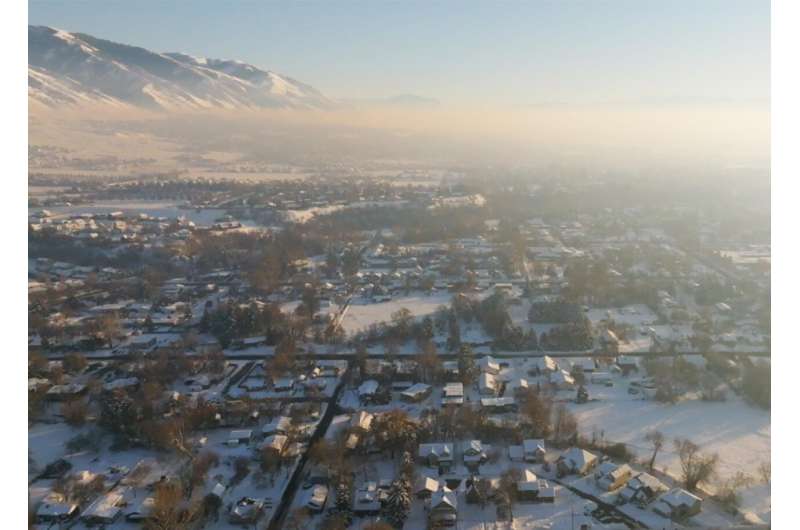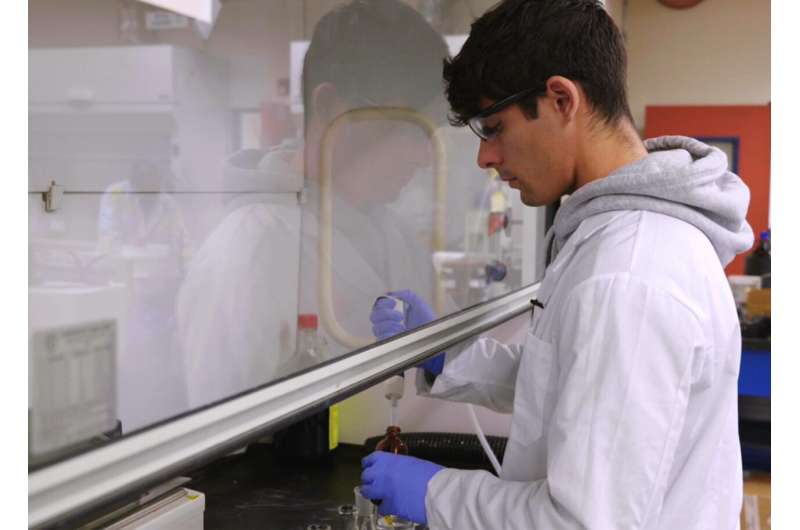This article has been reviewed according to Science X's editorial process and policies. Editors have highlighted the following attributes while ensuring the content's credibility:
fact-checked
trusted source
proofread
Professor and students investigate air pollution in Cache Valley

It's been long known that the air quality of Cache Valley is among the worst in the nation, but what exactly makes it so bad? The answer: ammonium nitrate.
Dr. Randy Martin is an environmental engineering professor at Utah State University who studies the concentration of ammonia in the valley. Ammonia typically comes from the agricultural industry and bonds with nitric acid coming from automobiles and other sources to form particulate matter, commonly known as PM2.5. It is called this because the particulate matter is 2.5 microns or less, which can then become trapped in our lungs.
Martin has followed ammonia levels in Cache Valley, an area in northern Utah and southeast Idaho, since the mid-2000s and knows it is an issue. The levels are tested a few years apart to see what makes up more of PM2.5, ammonia from agriculture or nitric acid from automobiles. The Utah Department of Environmental Quality reports that ammonium nitrate is responsible for 70 percent or more of PM2.5 in Cache Valley during an inversion.
"One of the reasons we have air pollution is because of our topography. The meteorology basically puts a lid on our air, trapping these concentrations inside," Martin said. "By itself, ammonia concentrations don't reach the levels of being a health impact. The magic happens when they come together and form particulate matter that exceeds health standards."

This year, following an intense outbreak of the avian flu, Martin wanted to see if a loss in agriculture depleted ammonia concentrations and compare it to past years. Samplers were placed throughout the valley and collected weekly to analyze the concentrations.
Despite the avian flu killing off nearly 2.2 million birds in Utah, poultry flocks quickly repopulated, making it difficult to determine whether those numbers truly would affect ammonia levels in the valley. Still, the study continued.
Martin also had graduates and undergraduates helping him with his study, including environmental engineering student Ian Parvin, who was responsible for collecting samples and preparing them for analysis.
"It's important to understand our poor air quality so we can figure out how to regulate and control it," Parvin said. "That way we can make it better in the future."
Parvin is also working with Martin on another environmental study about halogens around the Great Salt Lake. Because the lake is a main source of industrial activity, it can release a number of pollutants, including halogens, which are reactive, non-metallic elements that can form acidic compounds. This means that halogens can react with other environmental pollutants to form harmful compounds.
For this study, Martin and his team are trying to determine which halogens are most prevalent. Samplers have been set up around the Great Salt Lake, from Lakeside on the west shore of the lake to Golden Spike on the north, to absorb halogens. This is a cooperative study with the Utah Division of Air Quality, and testing is being done at the Utah Water Research Laboratory.
"We need to understand how many halogens exist so we can see how the photochemistry is affected and what's contributing to harmful pollutants," Martin said. "This is how we can learn to control it."
Provided by Utah State University




















